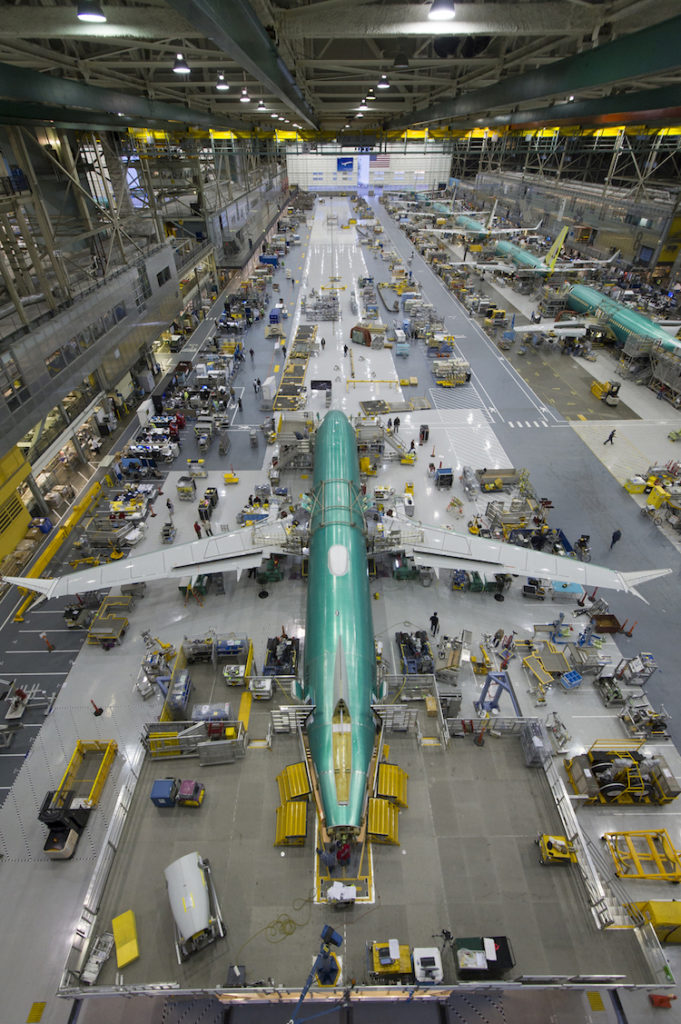Global Avionics Round-Up from Aircraft Value News (AVN)

Boeing 737 Max production line at the Renton Factory. Photo: Boeing
Boeing is decisively overhauling the avionics suite across its 737 MAX family, a move designed to regain trust from regulators, airlines, and the flying public after years of scrutiny.
While the MAX has been a sales success post-grounding, lingering concerns over software and system reliability have kept some buyers and pilots cautious.
Enhancements to the cockpit electronics and flight control systems are intended to reinforce safety, improve operational awareness, and position the aircraft as a modern, highly capable narrowbody for the next decade.
At the core of Boeing’s approach is a layered strategy: strengthening existing systems while integrating new technologies that exceed regulatory expectations. The MAX’s flight control computers, already a focus of post-accident fixes, are receiving updated redundancy protocols and more robust data monitoring.
These upgrades aim to reduce the risk of system anomalies and provide pilots with clearer, faster feedback during critical phases of flight.
The avionics refresh also targets situational awareness enhancements. Pilots will benefit from improved flight deck displays, including higher-resolution screens and redesigned alerting logic that prioritizes critical warnings without overwhelming crews.
Advanced navigation and communications capabilities are being added as standard, supporting next-generation airspace initiatives like performance-based navigation and ADS-B upgrades, which are increasingly mandated in global hubs.
Boeing is also investing in predictive maintenance tools that tie directly into the avionics network. By feeding real-time performance data from sensors throughout the aircraft to ground operations, airlines can anticipate system issues before they affect reliability.
This data-driven approach not only reduces operational disruptions but also demonstrates to regulators that the MAX can be monitored proactively, a key factor in risk mitigation.
Sending a Message
These avionics improvements are more than technical fixes; they are a message to the market. Airlines are placing renewed orders for the MAX, but many are factoring in pilot training, certification updates, and system transparency before committing. By enhancing the aircraft’s electronic backbone, Boeing hopes to reassure buyers that the MAX now embodies the reliability and safety standards expected of modern airliners.
From a financial standpoint, these enhancements could support higher residual values and stable lease rates. Aircraft with upgraded avionics are more attractive to lessors because they reduce long-term operational risk and regulatory hurdles.
For operators, the promise of fewer flight interruptions and smoother certification processes translate into lower operating costs, making the MAX a more compelling choice in the crowded narrowbody market.
Despite the challenges of restoring trust, Boeing’s avionics push signals a broader commitment to reforming the MAX brand. It is a calculated investment: advanced systems, integrated safety features, and enhanced data capabilities not only satisfy regulators but also reassure crews and the traveling public.
Avionics have always been at the heart of an aircraft’s worth, shaping both its operational appeal and its long-term market value. For lessors and operators alike, the sophistication, reliability, and upgrade potential of a flight deck can determine whether an aircraft commands a premium or languishes on the market.
Modern, data-centric avionics reduce maintenance costs, streamline pilot training, and keep fleets compatible with evolving air traffic management systems. These are advantages that translate directly into higher lease rates and residual values. In a competitive leasing environment, the avionics suite is no longer just a cockpit feature; it’s a financial asset.
This article originally appeared in Aircraft Value News.
John Persinos is the editor-in-chief of Aircraft Value News.